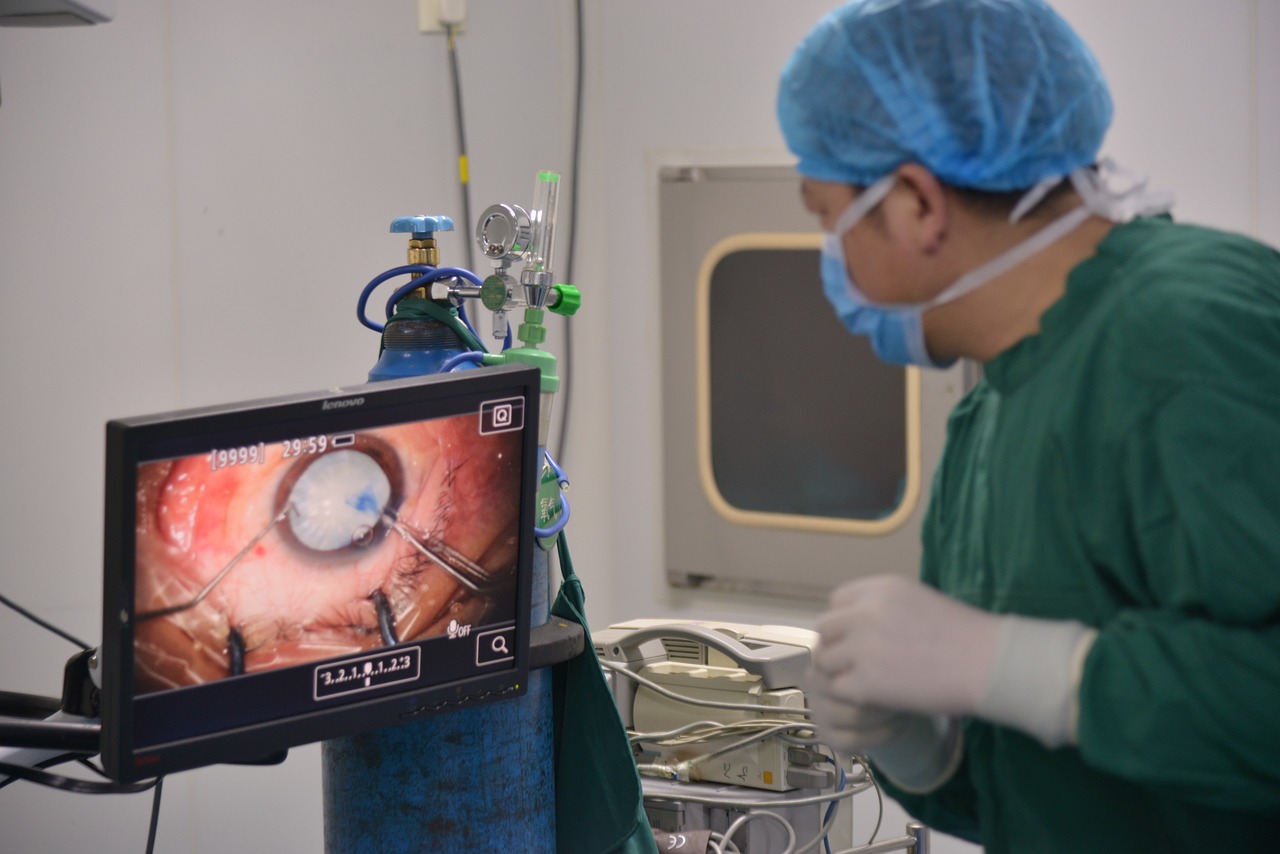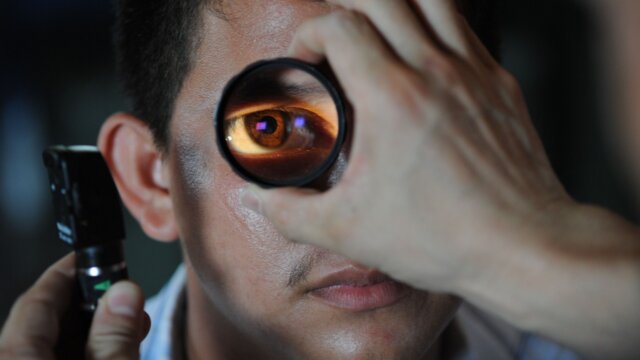FTC disclaimer: This post may contains affiliate links and we will be compensated if you click on a link and make a purchase.
Cataracts – a common eye condition affecting many, particularly those over the age of 50. Cataracts, often caused by unprotected exposure to ultraviolet radiation and nutritional deficiency, can impair vision and affect the quality of life.
The prevalence of cataracts is significant, with an estimated half of Americans over the age of 80 living with this condition.
Furthermore, the number of cataract surgeries performed in the U.S. each year exceeds one million. So, understanding the necessity of cataract surgery is crucial.
It’s noteworthy that the World Health Organization (WHO) and the International Agency for the Prevention of Blindness (IAPB) have launched initiatives aimed at eliminating avoidable blindness, with a primary focus on conditions like cataracts.
This article aims to shed light on cataracts, the necessity, and the prevalence of cataract surgery, thereby empowering readers to make informed decisions about treatment options.
Understanding Cataracts
When it comes to eye health, one common condition that affects millions worldwide is cataracts. But what exactly are cataracts? Essentially, they are a clouding of the lens inside your eye, leading to impaired vision, and even vision loss in severe cases.
The prevalence of cataracts increases with age, making it a major concern for seniors. However, it’s not just the aging population at risk. Genetics and lifestyle habits, such as smoking and excessive sunlight exposure, can also contribute to cataract development.
Understanding the risk factors and signs of developing cataracts is a crucial step toward maintaining good eye health. Regular eye exams can help detect cataracts early, giving you a head start in managing this common eye condition effectively.
The Need for Cataract Surgery
As we age, cataracts become a prevalent cause of vision impairment, affecting one in every four older Americans.
But cataracts impact more than just vision – they can also affect the overall quality of life. Cataract surgery offers a solution, not only restoring clear vision but also offering additional, often overlooked benefits.
During the procedure, an ophthalmologist replaces the eye’s cloudy lens with a new artificial lens, or IOL. This often eliminates or reduces the need for glasses, enhancing near, middle, or distance vision.
The result? A rejuvenated lifestyle with the potential to resume activities previously avoided due to poor vision. Additionally, cataract surgery has been linked to reducing the risk of falls and even preventing dementia.
Despite the clear benefits, misconceptions about cataract surgery persist. Many believe it’s only for older individuals, overlooking the fact that early detection through regular eye exams can lead to earlier treatment, potentially saving patients from severe visual impairment.
Ultimately, cataract surgery is about more than improved vision – it’s about preserving and enhancing quality of life.
Types of Cataracts
Cataracts, which are the leading cause of blindness globally, can be categorized into several types, each with unique symptoms and treatment approaches. The different types of cataracts include age-related, congenital, cortical, and posterior subcapsular cataracts.
The most common type, age-related cataracts, usually develop due to natural changes in the lens as one ages. It’s linked to lifestyle factors such as smoking, excessive alcohol consumption, and certain health conditions like diabetes (source).
Congenital cataracts are present at birth and can be associated with systemic diseases, inherited traits, or unknown causes. They may occur as unilateral or bilateral findings (source).
Cortical cataracts form when lens fibers around the nucleus become opaque. The most common symptom is glare, especially from headlights while driving at night (source).
Posterior subcapsular cataracts are typically congenital and are characterized by well-demarcated white opacities in the center of the posterior capsule. They can lead to severe vision impairment over time.
Understanding these different types of cataracts and their unique symptoms can help in early detection and treatment.
Symptoms and Diagnosis
Identifying the symptoms of cataracts is the first step toward diagnosis and treatment. Common symptoms include blurry vision, experiencing glare, and having poor night vision.
It’s important to note that these symptoms might also be indicative of other eye problems, necessitating a comprehensive eye exam for an accurate diagnosis.
- Blurry vision: This is often one of the first signs of cataracts, where your vision may appear cloudy or fuzzy.
- Glare: Cataracts can make light from the sun or a lamp seem too bright or glaring.
- Poor night vision: You may find it more difficult to see at night or in low light.
Regular senior eye exams or diabetic eye exams are crucial for the early detection and treatment of cataracts. If you are experiencing any of these symptoms, it is important to schedule an appointment with an eye care professional.
Treatment Options
When it comes to dealing with cataracts, there are several effective treatment options, both surgical and non-surgical. Many individuals find relief from symptoms using non-invasive methods like eye drops and lifestyle changes.
- Eye drops can help manage symptoms of cataracts and may delay the need for surgery. They work by reducing inflammation and improving the overall health of your eyes.
- Lifestyle changes such as improving your diet, quitting smoking, and wearing sunglasses can slow the progress of cataracts and improve your overall vision health.
However, when these methods are not enough, cataract surgery is a highly effective and safe treatment option.
It involves removing the cloudy lens and replacing it with a clear, artificial one. The benefits of this surgery include improved vision reducing the risk of falls and accidents.
Despite the benefits, it’s important to discuss potential risks and complications with your doctor. Always seek medical advice before deciding on surgery.
Prevention and Management
Preventing cataracts can be as simple as donning sunglasses to block ultraviolet B rays when outdoors, or maintaining a balanced diet rich in fruits and vegetables.
These dietary choices not only provide vital vitamins and minerals but also antioxidants which aid in maintaining eye health. Studies suggest a diet high in these nutrients can reduce the risk of developing cataracts.
Post-Surgery Care and Management
After cataract surgery, it’s essential to adhere to your follow-up appointments and use prescribed eyeglasses or contact lenses. Regular eye examinations are crucial for the early detection of any changes and for monitoring your eyes’ health.
Regular Eye Exams
It’s important to schedule regular eye exams to monitor your eye health. Any sudden changes in vision, such as double vision, sudden eye pain, or sudden headaches, should be immediately reported to your healthcare team.
Conclusion
In the pursuit of understanding cataracts, we have traversed the prevalence of this condition, the necessity of cataract surgery, and who might need it.
Cataracts, if left untreated, can lead to a significant loss of vision and are a leading cause of blindness globally. Surgery is often the best option when impaired vision begins to affect daily activities.
However, the decision to undergo cataract surgery should not be taken lightly. It is crucial to consider your vision’s current state, the impact on your daily life, and the potential risks and benefits of the procedure.
For further information or to schedule a consultation, consider seeking advice from reputable sources like the National Eye Institute (NEI). They can provide valuable resources and guidance to help you make an informed decision about your eye health.
Remember, your sight is precious. Take the necessary steps to protect it.









